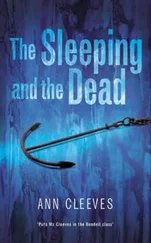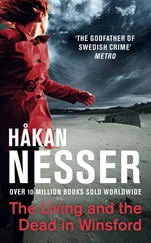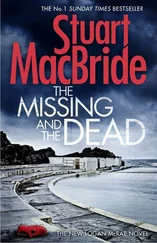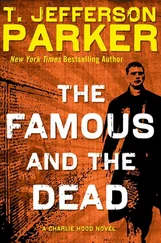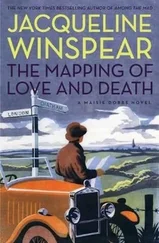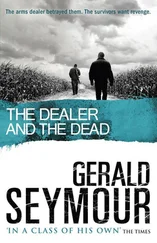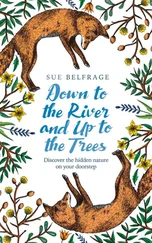‘What do you want to be when you grow up?’ she sweetly asked, to which I replied ‘A mortician’, just as sweetly.
I’m sure the scissors paused in mid-air at this, just for a moment, while the hairdresser glanced at my mother who returned her inquisitive stare with a shoulder shrug as if to say ‘nothing to do with me’. It just wasn’t that common for a small, blonde, female child to say they wanted to be a mortician in those days◦– the days before the media made death and forensics popular. It wasn’t a career that was well known and it wasn’t something that ran in my family, but for me it was a calling; I don’t remember ever wanting to do anything else. I had always been fascinated by the body and how it worked, long before I associated the miracle of life with inevitable death◦– a lesson I had learned at my dying grandfather’s feet. But after that fateful day I wanted to know what had happened to his body to snuff out his life so quickly, like a clockwork toy shuddering just before the energy is completely spent and the key stops turning.
And it didn’t stop there.
I was enthralled by any dead animal I found on the street◦– just like that poor cat◦– and often roped my friends into giving them burials in the garden. This is a very common thing for young children to do when becoming aware of their own mortality so please don’t worry if your little one creates a graveyard in the garden◦– you don’t have a budding serial killer on your hands. Perhaps less commonly, though, the maggots, the blood and the bloating only piqued my curiosity rather than dampened it: I needed to know what was going on. I asked for a microscope around my tenth birthday, and on ‘Bring in a Toy’ day at school I did a show-and-tell about how it worked to my classmates who I imagine were less than thrilled. I’m quite surprised I had any friends, now that I think of it. At the same age I could often be found wandering to the local library and borrowing A-Level biology textbooks to pore through on my own. I read in one of those many books that an earthworm cut in half will become two earthworms. Imagine that! Like a tiny Dr Frankenstein with pigtails and knee socks, I thought this was the key to avoiding death. Worm after worm was pulled out of the undulating mounds of our garden/graveyard by my relentless little fingers, then chopped in two and observed with a magnifying glass.
My long-suffering mother was not happy with this use of her cutlery.
* * *
I still go to the hair salon, of course, and when I inevitably get asked about my job I’ll happily talk about it. These days people are often very interested, and many of the other customers and stylists in the salon usually get involved in the chatter too. Everyone, it seems, has seen CSI or Silent Witness , or read books by Patricia Cornwell or Kathy Reichs and has a glamourised idea of what the job is like. Forensic science fascinates, and as long as I don’t go into too much of the minutiae of my routine (nobody wants to hear about that time I walked around with faeces on my elbow all day) I can quite happily carry on a conversation for hours about work, usually being asked the same questions I’ve been asked a million times before. In any case, they’re so much better than the usual salon queries about where I’m thinking of going on holiday. Corpses = interesting. Costa del Sol = not so much.
The exception is when I go to get my nails done (and I do this now because I was unable to when I worked in mortuaries due to the constant use of my hands for intricate work, so forgive me this one small vanity. If you’d spent eight years walking around in wellington boots and PPE looking like a fishwife, you’d do everything you could to feel glamorous now, too.) There’s one man in particular at the salon I often ask to do my nails because, in a bizarre synchronicity, he has just one long thumbnail, exactly like my great-granddad, which he uses to scrape errant nail varnish from my cuticles when he makes a mistake. I never met my great-granddad but the similarity gives me comfort.
None of the nail technicians in my local salon speak much English so I can’t really do anything except watch them. And I like to watch them because, as they go about their intricate work, they remind me of me , and of many APTs like me, as we prepared for an autopsy. They carry out their task diligently, with all their tools and all their liquids and powders ready to go◦– a place for everything and everything in its place. They are prepared even to the point of tearing off single pieces of absorbent paper towel so they don’t need to scrabble about for it later and mess up the whole roll.
That was how I began every single day as an APT, coming into work at least half an hour before I was meant to, no matter where I was employed, and always long before the pathologist arrived. Generally, as an APT my day would start at eight but I’d arrive at seven thirty to put the coffee maker on before colleagues appeared. Because the pathologists aren’t around for the whole autopsy they’d usually pop their head in to identify the deceased first and sign some paperwork before going to their office and allowing us to carry on with the preparation. This initial identification is obviously extremely important◦– a decedent will be checked and checked and checked again via ankle ID and wrist ID. Carrying out a post-mortem on the wrong person would be unthinkable. Once identified, the doctor would then leave, aiming to be back down in about an hour’s time, and this would be my time to shine: I’d begin the autopsy, a term which comes from the Greek ‘to see oneself’ or ‘examination of the self’.
For me, everything had to be laid out meticulously, ready for the procedure, or I felt like I wasn’t doing my job properly. I liked being the type of APT who would be holding a particular utensil or object aloft ready for the doctor before they even asked for it, like a nurse in an operating theatre. That way I felt in control of what I was doing, and that’s all the better for the patient. In addition to this, post-mortems are messy and you will get covered in blood and other fluids so the last thing you want to do, when the procedure is in full swing, is open cupboard doors and drawers and start searching for things like swabs or spare scalpel blades. Much better to do what the nail technicians do and pre-empt every possible action.
First I’d ensure there was plenty of what we call ‘blue roll’ to hand, an absorbent paper towel we used to mop up spills and clean out cavities. I’d lay out all my tools, with fresh blades on the scalpels, and the PM40◦– which is like a very large scalpel with a blade so big it needs to be screwed on◦– but once attached I’d leave the new blades shrouded in their foil or paper wrappers, having once been told that even the gentle action of oxygen molecules blowing against the thin blades’ surfaces can dull them. I didn’t know if it was true but I wasn’t taking any chances with my equipment.
Other tools laid out would include a very long knife about an inch thick with a square end, a bit like a Samurai sword, called a brain knife. A sharp, disposable blade like this is necessary to slice the delicate brain into sections. There were the rib shears I’ve mentioned, used for cutting through the ribs at the costal cartilage, which is much softer than the bone. The older a person gets, the more calcified their cartilage becomes, and it’s tougher to cut through without creating ragged edges and bone splinters which can actually penetrate your gloves and even your flesh. This is what caused such an awful noise when my friends watched me on TV. There was a ladle or two and something called a skull key which is a T-shaped piece of metal used to aid removal of the top of the skull later on. There was an array of scissors including bowel scissors, a variety of forceps (some with teeth and some not◦– a bit like my patients) and the cute-sounding ‘bone nibblers’ used for delicately removing pieces of bone. I’d also thread large, curved C- and S-shaped needles with thick white twine ready for sewing the skin together, and tape them to the side of the cupboard so they’d be ready to pull off and use. There’s nothing worse than fiddling with pristine rolls of twine when you have several pairs of gloves on, slippery with blood. But I tried not to automatically do what I might if I was sewing fabric with cotton: that is, moisten the end of the string with my mouth to sharpen it to a point! Soon the tool trolley would have a DIY vibe about it too, because I’d add a chisel or two with a huge mallet, an electric bone saw as well as a manual one in case the power cut out, and several large buckets and bowls.
Читать дальше

